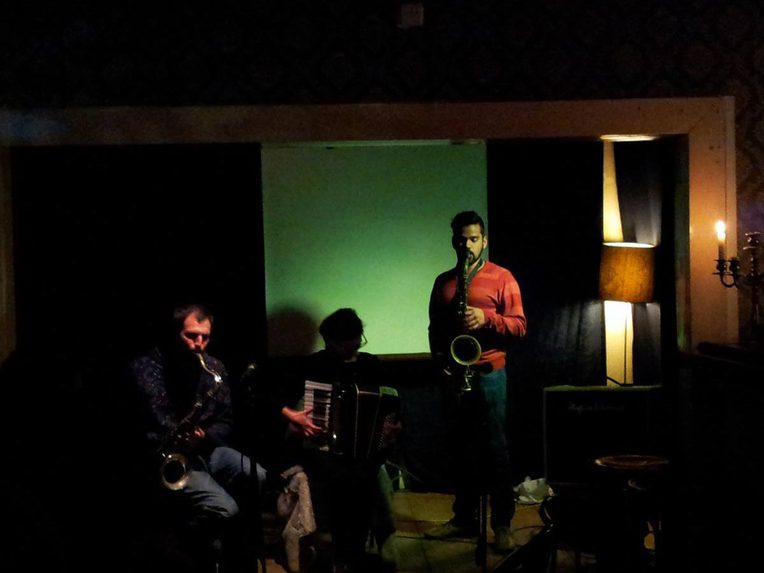
In a recent article in Cultural Anthropology, Nick Seaver (2018) asks, “What should an anthropology of algorithms do?” Seaver urges anthropologists to avoid portraying algorithms as entities empirically and analytically separable from social life, omnipotent in their capacity to override “the human.” Occupying what Seaver (2018, 380) calls the “analog slot,” the human here connotes a catch-all bundle of qualities such as spontaneity, creativity, and affect. While attending to very legitimate fears of bots, hacks, and the genocide-stoking potential of algorithms, Seaver’s provocation calls for a commitment to careful empirical analysis that explores the situated lifeworlds in which humans shape, and are shaped by, algorithms.
What methodological approaches are best suited to such a project? How might we devise new ethnographic practices to challenge the “analog slot,” without either collapsing ontological differences between programmer and programmed or falling back on a stagnant analytic of hybridity? Given the extent of our intricate imbrication, might we consider not only an anthropology of algorithms, but also an anthropology with algorithms?
Ritwik Banerji, an ethnomusicologist, programmer, and saxophonist, provides a sonic starting point for experimental ethnography with algorithms. Banerji practices free jazz or free improvisation. Building on his career as a musician, he programmed a “virtual improviser” or “player-program,” an algorithm that can respond to and interact with human musicians in real time. Named after the software Max/MSP, Maxine is less a coherent physical apparatus than a network of feedback loops between algorithm, sonic input, and human musicians. Banerji programmed Maxine’s algorithm to produce spontaneity. Yet, in our interview, he reflected that this algorithm projects into the world his own interpretation of improvisation, interaction, and creativity. Built for spontaneity but shaped by human sociotechnical history, Maxine exemplifies Seaver’s (2018, 377) definition of an algorithm as “sociotechnical fabric.”

Is “programmed spontaneity” an oxymoron? Banerji leaves this question open to debate. In a multisensory twist on elicitation techniques, he invites improvisers to play with Maxine, then interviews the human players about their experience. Banerji attends to how individual musicians orient themselves to Maxine and construe Maxine’s relation to “the human.” Situated understandings of what constitutes “the human” come into relief, as do often surprisingly honest reflections about the rules of engagement within a musical genre supposedly free of all constraints.
Algorithms occupy several positionalities in Banerji’s work: ethnographic interpretation, interlocutor, ethnographic Other, and perhaps most provocatively, “co-ethnographer.” In my interview with Banerji, he describes how players unaccustomed to improvising with an apparatus like Maxine liken it to a childlike figure, a cultural outsider unfamiliar with the rules of engagement. In other words, they position Maxine as an ethnographic Other. Second, Maxine is a sociotechnical infrastructure; by tweaking the positions of the speakers and microphones, Banerji can change how and to whom Maxine “listens,” and the degree to which Maxine interacts with the external sonic environment. Third, Maxine is itself an ethnography; “algorithmic architecture is already one type of ethnographic representation,” Banerji says, sonically enacting Banerji’s own interpretation of what constitutes interactivity in the first place.
Finally, Banerji figures Maxine as a “co-ethnographer.” Maxine’s presence gets improvisers to speak the unspeakable, venturing explicit theorizations of what makes a musical interaction creative and alive, even though free improvisation purports to transcend codified principles of musical interaction. Without Maxine, improvisers would be too bound by ideals of romantic neoliberal freedom—and a reticence to criticize their peers—to bring implicit frameworks to conscious attention, Banerji argues.
What better to challenge the persistent, analytically constrictive binary between human affectivity and cold algorithmic calculus than an algorithm that breaches the very heart of romantic humanism: spontaneous play? Maxine is invited up onto the (literal) stage of co-present creativity. As players in Banerji’s elicitation sessions reevaluate what makes a musician human, neoliberal ideas of unconstructed freedom collide with the creative generativity of an algorithm. More precisely, particular notions of freedom collide with the creativity of Maxine’s “socio-technical fabric,” a tapestry of sonic infrastructure and ethnographic interpretation.

Maxine’s very physicality challenges notions of the algorithm as a discrete, bounded entity. Its onstage presence consists of a laptop, amplifiers, and speakers. These are commonplace items in improv sessions. Until the music starts, one might not notice Maxine at all. However, once Maxine sonically engages with other players, the disorienting, often discordant performance presents a uniquely tangible encounter with the dual power of algorithms to both reflect and shape social reality.
Banerji’s experimental ethnography of play and creativity may seem a departure from urgent concerns about the role of algorithms in stoking racism, anti-democratic movements, and genocide. However, this series—which includes an interview with Banerji, a performance recording of Maxine, and “liner notes” on that performance—stands productively adjacent to these pressing political problems. Its invitation to musical and methodological play may give us a broader range of tools with which to engage the profound ways in which algorithms shape and are shaped by human experience.
What follows is a multi-modal assemblage which includes a performance recording featuring Maxine and trumpet player Axel Dörner, Banerji’s reflections on their session, and an interview I conducted with Banerji.
References
Seaver, Nick. 2018. "What Should an Anthropology of Algorithms Do?" Cultural Anthropology 33, no. 3: 375–85
Posts in This Series

Liner Notes on Improvising with an Algorithm
On November 9th, 2015 in Berlin-Tempelhof, Ritwik Banerji recorded an improvisation session between Maxine and Berlin-based improviser Axel Dörner. Listen to th... More

Algorithm as Co-Ethnographer: An Interview with Ritwik Banerji
In November 2018, I had a wide-ranging conversation with musician, programmer, and ethnomusicologist Ritwik Banerji, who had recently completed his PhD in ethno... More